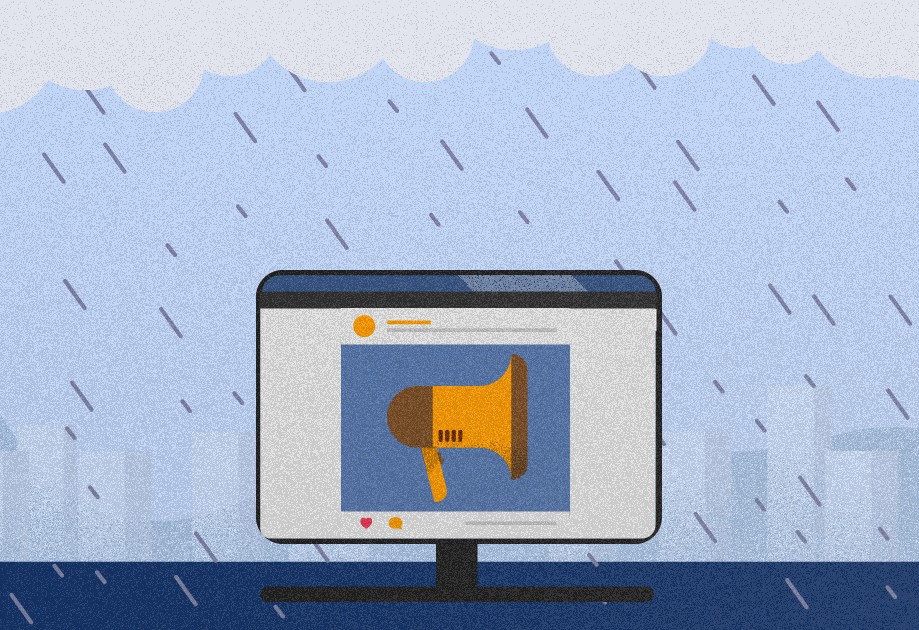Among the many changes driven by the Coronavirus, the pandemic is forcing us to re-evaluate our marketing strategies.
It looks increasingly certain that it could bring a recession in 2020-2021 after going through a “normalization” period, as we’re noticing from the early signs of recovery in China.
Unfortunately, what we’re facing is unlikely to be a typical recession: in fact, it will be the first health-driven recession of modern times. That also makes the dynamics of the recovery hard to predict. Despite the situation, and while no two downturns are exactly the same, many of the lessons about marketing and advertising from previous recessions might still apply.
As Peter Field states, “The coming months will test everyone — we are in uncharted territory. But this was much the same in 2008, and it was the brands that held their nerve — and share of voice — that bounced back strongly when recovery came.“
This post pulls together expert evidence on the best way for brand owners to manage marketing and promotional budgets, showcasing some of the best thinking from across the industry on navigating the post-lockdown period.
1. Don’t go dark — if you can maintain spend
A general marketing principle dictates that market share (SOM) strongly correlates with the share of voice (SOV — the percentage of category advertising expenditure spent by the brand).
Specifically, where a brand SOV is higher than SOM (excess SOV or ESOV), the brand SOM tends to grow, and the opposite is valid.
If SOV falls below the brand’s SOM, then its market share is likely to fall over the following year.
How much SOV will contribute to the increase of SOM depends on the sector and other business variables.
In B2B, for every 10 points of ESOV you will achieve about 0.5% points of market share gain.
In times of recession, just keeping a promotional spend flat will put our brand in a dominant position.
As an example, if all the companies in our category cut their promotional spend in half, for example. Suddenly our budget that was 10% of the total share of voice, now doubles to 20% as a result.
We, therefore, know that cutting the marketing budget during a recession is a risky strategy.
It may provide some short-term relief, but the subsequent loss of market share that follows will be extremely difficult to regain when the crisis is over and during the recovery.
Yet, it’s increasingly clear that for many brands, this advice is academic and quite unrealistic.
Maintaining spend is not an option if your sector has been hit hard. Brands hardest hit by the pandemic will focus on saving jobs and business continuity.
2. Digital content experiences (not adverts) are on the rise
Because of the unprecedented nature of this crisis, digital content consumption has grown.
Despite the decline of media cost, media spend has fallen sharply across all channels as many categories turn off ad spend.
As an example, US spending on search adverts, often viewed as recession-proof, is falling between 9% and 15% in H1 2020 due to business closures and Amazon’s decision to suspend shipment of all non-essential products.
Offline content is declining too, due to the nature of the crisis; so are events, meetings, and large gatherings.
Digital content, organic search, video content, social media content, interactive content, webinars, and digital events, are on the rise —brands should turn to digital content, always looking at where their audience keeps conversations and consumes content.
Just because consumers are not purchasing right now, doesn’t mean they’re not researching. Releasing interesting or useful content now, that targets upper funnel consumers will increase brand awareness and trust.
Winning hearts and minds now will put you in a good position once recovery has begun, and users are ready to purchase again.
3. Brand building, not just activation
As we have mentioned presenting the SOV principle, brand associations created now are likely to bring the greatest sales benefit during the recovery period.
Brands who can still invest should resist the pressure to switch promotional spend from brand to activation.
This is even more valid for B2B: because the sales funnel in B2B, purchasing is generally longer than in B2C, arguments favoring long-term growth through the brand building are likely to be even stronger.
In addition, for those B2B businesses whose customers and prospects are unable to buy or cannot meet existing customer demand, pursuing short-term activation and lead gen activities make little sense.
For these brands, investing in long-term relationship-building is suggested.
Finally, some brands will see a lift in their products and services’ demand. Think about video conferencing platforms, digital content producers, and delivery brands.
A good mix of brand building and short-term activation will make perfect sense for these brands.
Les Binet is not wrong when he writes that “Brand promotion is not about profiting in recession; it is about capitalizing on recovery“.
Finally, brands forced to cut marketing investment should focus on brand visibility, maximizing Content Marketing tactics, and prioritizing customer and prospect relationships via owned digital properties (e.g., blogs) and social platforms.
PR and partnerships could represent another way to run marketing activities at no extra cost.
4. Emotions vs. logic, with distinctiveness
Featuring humanity, humor, warmth, and generosity in messages and promotions are advised.
Demonstrating humanity and generosity through behavior is advised too: brands should ask themselves the question, ‘how can we help?’.
We should lead with empathy, humor, and emotion.
The most successful campaigns out of previous recessions leveraged emotion over logic. Emotional creative strategies help to evoke warmth and humanity and have been the most effective in times of recessions.
Yet, we should be distinctive. When we communicate like everyone else — devoid of codes, devoid of differentiation, with exactly the same message as those around us — we will disappear completely.
We’ve listed some strategies that you can use during this period of crisis. But if you’re looking for more insights, subscribe to our free webinar this Thursday, May 28th, at 12 pm EDT/ 9 am PDT.
Giuseppe Caltabiano, our Director of Marketing, and Stephanie Mansueto, our Director of Content Strategy, will show how to pivot your marketing during the crisis.


![[ROCK NA] [EBOOK SEO] Complete Guide](https://rockcontent.com/wp-content/uploads/2024/06/banner_Search-Engine-Optimization.png)






